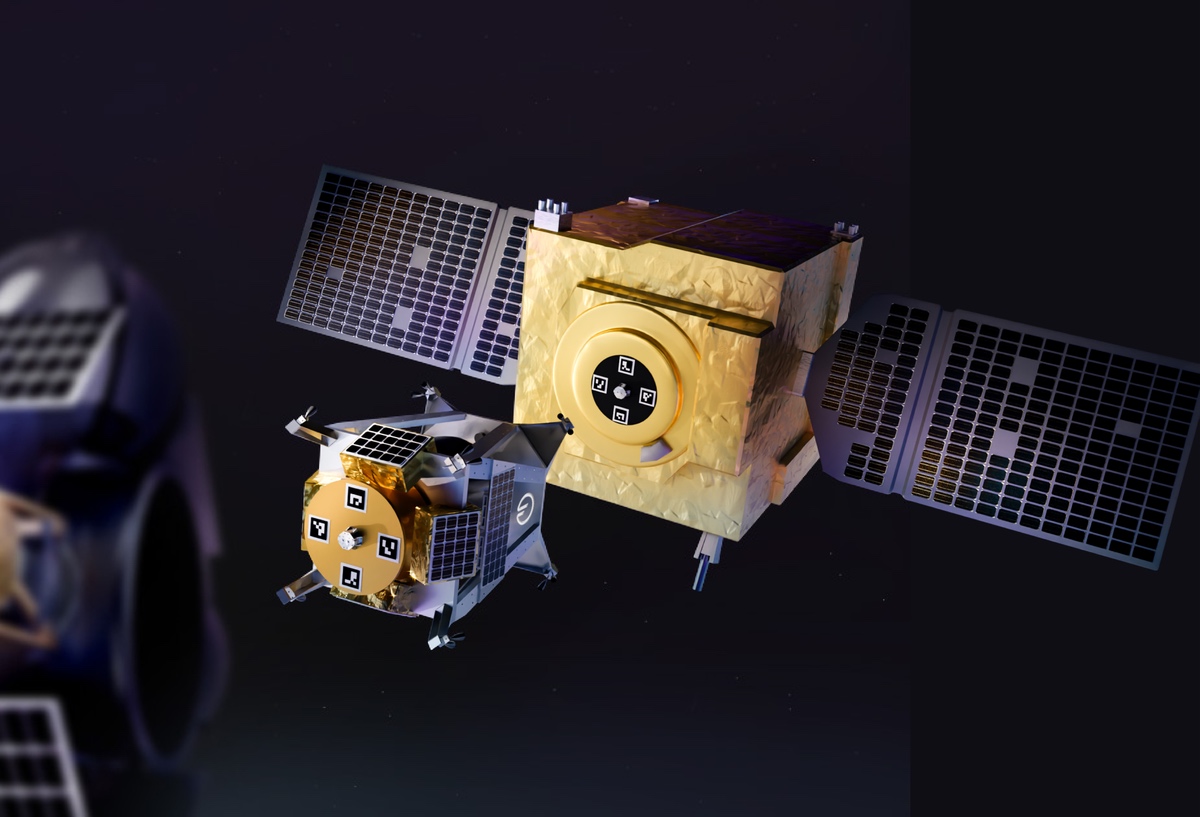Story updated April 3 with additional details of Northrop Grumman’s satellite refueling program
WASHINGTON — The U.S. Space Force is preparing a series of experiments to test in-space satellite refueling technologies, positioning commercial competitors at the forefront of an emerging sector of the space industry.
The planned demonstrations, known as Tetra-5 and Tetra-6, will evaluate refueling hardware from Astroscale, Northrop Grumman, and Orbit Fab — companies vying for dominance in the nascent orbital refueling market.
These experiments are seen as critical steps toward establishing a sustainable commercial refueling architecture in space. “Tetra-5 will validate the interface and a scalable commercial refueling architecture,” a Space Systems Command spokesperson said in a statement to SpaceNews.
Initially conceived in 2022 as a single $44.5 million experiment scheduled for 2025, the program has since been split into two separate missions: Tetra-5, launching in 2026, and Tetra-6, following in 2027.
Tetra-5: Testing commercial interfaces
The Tetra-5 mission will deploy two small satellites equipped with Orbit Fab’s Rapidly Attachable Fluid Transfer Interface (RAFTI), a specialized valve designed to enable on-orbit propellant transfers.
One satellite will attempt to dock with an Orbit Fab propellant depot developed with Pentagon funding through the Defense Innovation Unit. The second will test compatibility with an Astroscale U.S. propellant shuttle being developed in partnership with Space Systems Command’s Servicing, Mobility, and Logistics office.
Tetra-6: Northrop Grumman’s solution
The following year, Tetra-6 will test Northrop Grumman’s Passive Refueling Module (PRM), also developed with Defense Innovation Unit backing. This mission will deploy a single satellite equipped with the PRM interface, which will attempt to dock with Northrop Grumman’s ROOSTER-5 (Rapid On-orbit Space Technology Evaluation Ring) satellite.
The Space Systems Command said it has approved both the RAFTI and PRM refueling systems “as acceptable commercial solutions for refueling.”
ROOSTER-5 is based on the Northrop Grumman ESPAStar payload adapter, a ring-shaped bus designed to ride as a secondary payload on national security space missions. The satellite will carry the refueling payload developed by Northrop Grumman under a program called Elixir.
As part of the Tetra-6 experiment, the Space Systems Command awarded Northrop Grumman a separate contract to demonstrate a refueling payload, the company announced April 2.
The refueling payload will be equipped with the company’s Active Refueling Module (ARM) which interfaces with the PRM for the transfer and receipt of fuel.
The Elixir refueling payload program, the company said, is intended to help the Space Force to refine tactics and procedures for rendezvous and proximity operations, docking, refueling, and undocking of on-orbit vehicles.
Lauren Smith, Northrop Grumman’s program manager for in-space refueling, told SpaceNews that the Elixir program encompasses more than just development of a refueling payload, and aims to stitch together the payload, the platform and the client vehicle.
Tetra-6 is planned to be the client vehicle to receive fuel as part of the Elixir refueling demonstration.
The Elixir program is intended to demonstrate Northrop Grumman’s refueling vehicle concept known as the Geosynchronous Auxiliary Support Tanker (GAS-T) which the company developed under a Space Systems Command contract announced in January 2024.
“We successfully completed our scope of work and contract requirements for the GAS-T contract,” said Smith. “This refueling demonstration will happen under the Elixir contract.”
She said the GAS-T contract “served as a pathfinder to help inform future enterprise refueling requirements and potential risk-reductions activities for refueling” and helped to inform the Elixir program.
Assessing the technology
Beyond the refueling hardware providers, the Tetra missions involve several other contractors. Arcfield serves as the satellite integrator, while Redwire will supply the satellite buses. The Space Systems Command will handle operations for both missions.
For the Space Force, these experiments will provide crucial data to assess the viability of the emerging in-space logistics industry. The service also wants to gain insight into whether commercial providers can establish sustainable business models without continuous government subsidies.
While Space Force officials have expressed interest in leveraging commercial refueling services, they first require concrete proof that the technology functions reliably in the harsh environment of space.
In-orbit refueling capability, according to companies in the industry, could transform space operations by extending satellite lifespans, enabling greater operational flexibility, and reducing the costs associated with replacing aging satellites.


